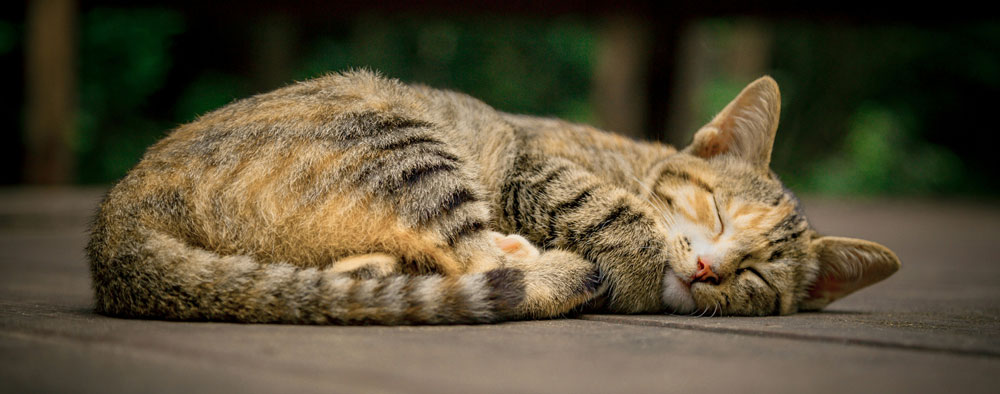
Over a quarter of the feline population is suspected of having osteoarthritis. Despite this, detection and diagnosis in practice remains low. There are also very few studies that explore the effective management of osteoarthritis in cats….
So what is osteoarthritis?
Osteoarthritis is the degeneration of joints which leads to chronic pain. In cats, this is often a disease without any history of previous trauma or damage to the affected joints.
The most common sites in cats are the lower back, hips, knees, ankles and elbows. Symptoms are often detected in older cats however cats as young 1 year old can have structural damage due to osteoarthritis.
Diagnosis relies upon demonstration of radiographic changes within the joints however there are clinical signs that increase the likelihood of osteoarthritis.

Common signs
In the early stages, the clinical signs are usually subtle, intermittent and insidious before becoming permanent in the severe stage.
Due to osteoarthritis often being found in both sides, i.e. left and right elbows, it is hard to detect.
Some things you might see are:
- Limping
- Difficulty walking up and down stairs
- Difficulty jumping onto windowsills, fences or counter tops.
- Matted hair over painful areas
- Poor grooming and greasy coat
- Thick and long nails
- Aggression to owners or other pets in the house
- Seeking out warm areas
- Not as playful or sleeping more
- Not wanting to be touched

Treatment and management options
Once a diagnosis has been made, the aim of treatment is to improve comfort and control of inflammation. Long term and persistent pain in cats can produce something called ‘pain wind up’ or ‘hypersensitisation’ where light touch of the affected area is very painful. Over time, untreated osteoarthritis leads to muscle loss and reduced mobility as well as behaviour changes.
Primary treatment includes pain relief via licensed veterinary products e.g. Meloxidyl or Onsior. Both of these are oral medications that are given daily.
If these medications are not well tolerated or are not possible to give, a long acting monthly injection can be used called Solensia. This is also safe in elderly cats with other illnesses.
Additional measures we can take include Laser Therapy where the joints are warmed and treated with a wavelength of light that reduces inflammation. This is performed in consultation with our nursing team and is often well tolerated.
Finally we do have some human medications that we use in cats to reduce pain, for example Gabapentin and Amantadine.

Why should we treat osteoarthritis?
Treating osteoarthritis can improve the quality of life of our cats.
A review of indicators of good quality of life in cats with osteoarthritis found that increased pain and decreased mobility negatively affected physical appearance, energy, vitality, mood, sociability, and overall physical and mental well-being.
So if we can look for signs our cats are stiff and painful, we can start treatment sooner and give them a better, happier life for longer.
If you think your cat is showing any signs of stiffness or slowing down, please call us to register and make an appointment on 01980 621999. You can also register online today via our website!
If your cat is already a patient, please feel free to speak to us about all of the available treatments for osteoarthritis.